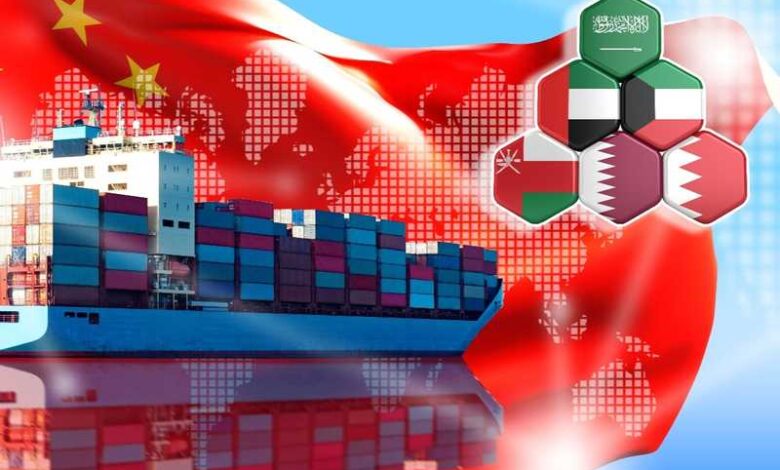
Shipping disruptions through the Red Sea and Suez Canal are likely to have only a modest impact on Chinese merchandise trade with most Middle Eastern countries. However, it could result in significant costs to China’s global trade, especially with Beijing relying on this as the shortest route to supplying Europe and the United States.
A recent report on Al-Monitor revealed that Chinese exports depend on Gulf countries as the hub for shipments to other destinations. With Chinese exports likely to rise, the level of exports to the Middle East is expected to rise as well.
It is worth noting that between 70 -75 percent of trade between China and the Middle East is with members of the Gulf states Iraq and Iran, which are not affected by shipping disruptions in the Red Sea. Moreover, trade to Africa too is unlikely to be directly affected by these disruptions.
Business relations
In the medium term, the Al-Monitor report finds that the Middle East’s trade relations with China are unlikely to change significantly. Even with low growth rates, the Chinese economy is still expanding, and China will continue to need oil. As well, it will look to balance imports from Russia with those from the Middle East, and not become overly dependent on either.
Regarding China’s exports to the region, even with economic diversification within the region, trade patterns are likely to remain the same, with the region purchasing goods from Chinese manufacturers.
Regional diversification, if successful, may relate to service sectors, such as tourism, which will lead to increased demand for manufactured goods, such as the food products industry. Moreover, attacks on shipping in the Red Sea will likely stop at some point, and the economics of the route will restore robust trade and a return to normalcy, hopefully in the near future.
Export market
The report said that Chinese exports to the Middle East have grown in recent years, generally with a higher speed than overall Chinese exports. In contrast, while China typically runs a trade deficit in goods with the Middle East and relies more on the Middle East for imports than as an export market, China’s imports from the region are more volatile.
Either way, despite the region’s efforts to diversify, these trade patterns depend on oil prices, and are likely to do so in the medium term.
The report explained that twenty Middle Eastern countries and economies constitute only about 5% of global GDP, but China’s trade with them as a share of total Chinese merchandise trade is much higher, reaching 7.95% in 2022 (6.28% for Chinese exports and 10.16% for Chinese import).
He explained that the rise in the share of Chinese imports is driven almost entirely by imports of oil and natural resources, and thus the value fluctuates with oil prices. The export share is due in part to the high incomes of many countries in the region and the fact that the Gulf serves as a hub for Chinese exports on their way to Africa and elsewhere.
As of 2023, even as Middle Eastern countries attempt to diversify their economies, economic relations with China remain highly dependent on China’s oil consumption. While this relationship is likely to continue in the medium term, changes may occur.
Alternative scenarios
The Al-Monitor report listed several scenarios in trade relations between the region and China, as follows:
1. Expansion of manufacturing exports
Chinese exports of manufactured goods to the Middle East may grow at a faster rate than before, taking advantage of the region’s central location, which allows it to act as an intermediary station for exports abroad.
Faced with the slowing growth from real estate investment, as it has done for most of the 21st century, China is likely to increase its investments and subsidies in manufacturing. Since Chinese consumption is unlikely to rise as much as production, new production will need to be exported, and the Middle East is an excellent stop.
2. Decrease in China’s oil imports
Through its expansion of coal, nuclear, solar and wind power, and the fact that Russia has become more dependent on China as a market for its oil since Moscow’s large-scale invasion of Ukraine in February 2022, China’s imports of oil and gas into the Middle East have increased.
Eastern capacity could decline, and this would impact regional current accounts, leading either to regional exporters having to redirect their exports elsewhere, or to falling prices, or both – neither of which represents a positive outcome for the region, and such a scenario provides further encouragement for diversification.
3. Continued Red Sea tensions
A third, low-probability, but high-impact scenario could emerge if unrest in the Red Sea is prolonged and causes permanent reluctance to use the route. China has made significant investments in the Suez Canal region, specifically in TEDA, the economic and trade cooperation zone between China and Egypt.
By mid-2023, this region had attracted investments worth more than $1.6 billion and hosted more than 140 companies. Any reliance they have on shipping routes through the Red Sea will impact them adversely, at least in the short term. However, by late January, companies were already starting to adapt, as smaller Chinese ocean carriers began new routes in the Red Sea in the hope that they would not be attacked by the Houthis because they were Chinese.













